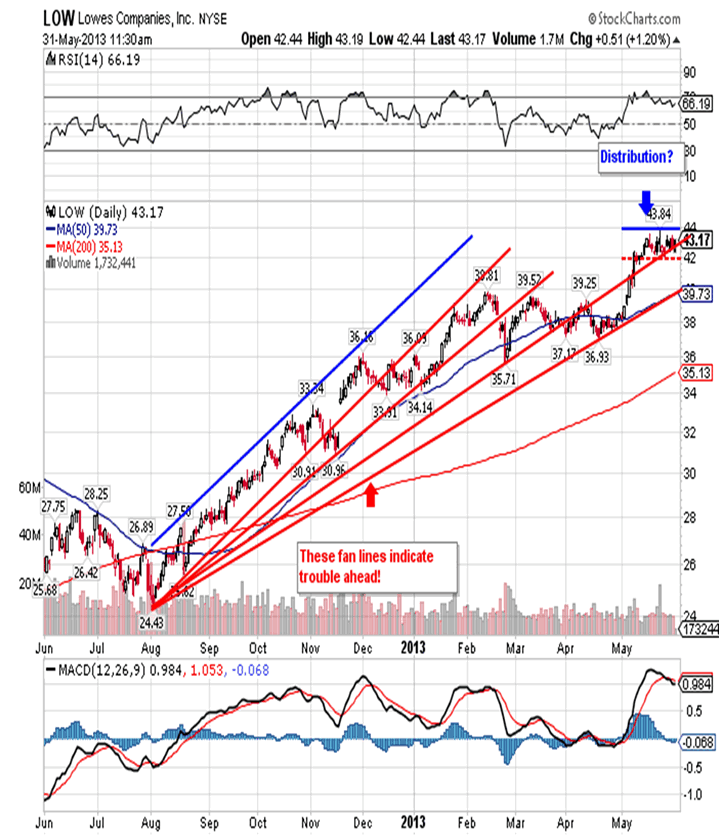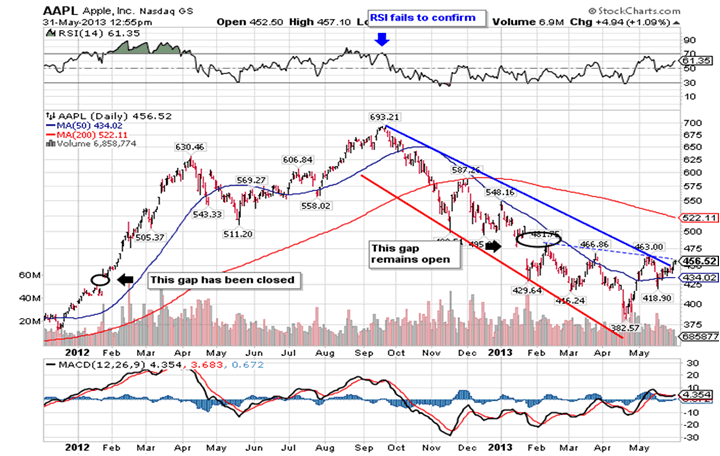Euro-zone, U.S. Compounding Errors! Trillions of Dollars being Printed
Stock-Markets / Financial Markets 2013 Jun 02, 2013 - 02:07 PM GMT You're not to be so blind with patriotism that you can't face reality. Wrong is wrong, no matter who does it or says it. - Malcolm X
You're not to be so blind with patriotism that you can't face reality. Wrong is wrong, no matter who does it or says it. - Malcolm X
Over the last couple of months we’ve heard the IMF, ECB and US Federal Reserve all come out and tell us that they have the right policies in place and things are getting better. Unfortunately, the statistics just don’t bare that out even though they’re often biased in favor of the very governments that produce them. On Friday I saw that unemployment has reached a new high in the Eurozone while inflation remains well below the European Central Bank's target, underscoring just how severe a challenge EU leaders face to revive the bloc's sickly economy. Joblessness in the 17-nation currency area rose to 12.2% in April, this according to Eurostat on Friday, marking a new record since the data series began in 1995.

With the Eurozone also in its longest recession since its creation in 1999, consumer price inflation was far below the ECB's target of just below 2 percent, coming in at 1.4 percent in May, slightly above April's 1.2 percent rate. Some think the slight rise may quiet concerns about deflation, but the deepening unemployment crisis is a threat to the social fabric of the Eurozone, with almost two-thirds of young Greeks unable to find work exemplifying southern Europe's threat of creating a 'lost generation'. Policy makers have expressed concern that the greatest threat to the unity of the Eurozone is now social breakdown from the crisis, rather than market-driven factors.
In France, Europe's second largest economy, the number of jobless rose to a record in April, while in Italy, the unemployment rate hit its highest level in at least 36 years, with 40 percent of young people out of work. Some economists expect the ECB, with meetings on June 6, to act to revive the economy and go beyond another interest rate cut and consider a US style money-printing program known as quantitative easing. With the Organization for Economic Cooperation and Development forecasting this week that the euro zone economy would contract by 0.6 percent this year, unemployment is set to worsen long before it turns around.
In April, 5.6 million people under 25 were unemployed in the European Union, with 3.6 million of those in the Eurozone. Even if governments take on unions and vested interests to enact reforms, they will need time to produce benefits. Meanwhile the impact of the Eurozone's debt and banking crises has been sapping confidence from companies and households. Private consumption saved Germany from slipping into recession in the first three months of this year, but retail sales still fell unexpectedly in April because of the cold European winter. In France consumer spending dropped again in February, falling by 0.2 percent after contracting in January. French household purchasing power contracted in 2012 for the first time since 1984.
Meanwhile across the pond the consumer spending in the U.S. unexpectedly declined in April as incomes stagnated, putting the biggest part of the US economy on shaky ground at the start of the second quarter. Household purchases, accounting for about 70 percent of the economy, dropped 0.2 percent after a 0.1 percent rise the prior month that was smaller than previously estimated, this according to a Commerce Department report on Friday. Personal income, meanwhile, decreased 0.1%" in April after a revised 0.3% gain in March, mostly because of lower rents and farm-related earnings. The personal savings rate held steady at 2.5% and remains near a five-year low. Inflation as gauged by the core PCE price index increased less than 0.1% in April, and it's up just 1.1% in the past 12 months. That's the lowest level since March 2011 and just a notch above an all-time low. Overall PCE declined by 0.3% and is up a meager 0.7% in the past year. That's the lowest rate since October 2009.
Many believe the data underscore the risk to the economy from the federal budget cuts that began in March and a higher payroll tax implemented at the start of 2013. The drop in spending last month was the first since May 2012. The Commerce Department’s price index tied to spending, the gauge tracked by Federal Reserve policy makers, fell 0.3 percent in April, the biggest drop since December 2008, as fuel costs retreated. The so-called core price measure, which excludes food and fuel, was unchanged from the prior month and was up 1.1 percent from April 2012, matching a record low. Adjusting consumer spending for inflation, which renders the figures used to calculate gross domestic product, real purchases rose 0.1 percent, the smallest advance since October, after a 0.2 percent increase in the previous month, today’s report showed.
Strength in consumer spending and business investment helped the economy weather government cutbacks. Gross domestic product rose at a 2.4 percent annualized rate, and household spending expanded 3.4 percent, the most since the last three months of 2010. Purchases may be underpinned by gains in equity and housing markets. The Standard & Poor’s 500 Index (SPX), which reached a record on May 21, is up 16 percent since the start of 2013 through Friday. The S&P/Case-Shiller index of home values in 20 cities advanced in the 12 months to March by the most in seven years. As a result many are calling for a continued improvement in the housing market.
Lowe’s, the second-largest US home-improvement retailer, is among companies counting on a strengthening housing market to lift demand. The Mooresville, North Carolina-based chain said sales last month also recovered from a cold spring that sapped demand for outdoor merchandise such as flowers and fertilizer. Unfortunately, the chart of Lowe’s may tell us a different story:

Aside from the obvious warning signs we see in the previous chart, there is the issue of plummeting lumber prices:

So for those of you hoping and praying for a housing bubble to support the US economy, you might want to hang your hat on something else. These two charts indicate that the housing market’s best days are behind it.
Strangely enough the Dow is trying to continue higher regardless of the economy. I have to assume that investors have complete faith in Bernanke and his ability to keep a floor under stock prices at all costs. How else can you explain the fact that the Dow has now gone seven months without so much as a 5% correction:

That is something that has never happened before and is in spite of the fact that RSI has been extremely oversold for the better part of 2013. Still the Dow last made a new all-time closing high on Tuesday at 15,409.39, although the Dow’s new all-time closing high went unconfirmed by the Transportation Index as you can see below:

One of the drivers behind the surge in the Dow has to do with companies borrowing cheap to buy back their own stock at nosebleed prices, and doing so in a volume that will soon emulate the carefree abandon of those pre-Lehman days. By some estimates this has driven half the US equity gains this year:

Dollar-value share repurchases amounted to $93.8 billion over the fourth quarter and $384.3 billion for 2012. The fourth quarter total is in-line with that of Q3, but represented year-over-year growth of 9.6%.
Estimates for the first quarter of 2013 approach US $100 billion! Looking forward I see several companies in the S&P 500 have authorized new programs or additions of $1 billion or more since December 31st, including Gap (GPS), Blackrock (BLK), Marathon Petroleum (MPC), L-3 Communications (LLL), Visa (V), Allstate (ALL), Moody’s (MCO), CBS Corporation (CBS), Dow Chemical (DOW), and AbbVie (ABBV). In addition, even larger authorizations were made by United Technologies Corp. (UTX), 3M Co. (MMM), and Lowe’s (LOW), which all announced replacement programs worth approximately $5.4 billion, $7.5 billion, and $5 billion, and Hess Corporation (HES), which announced a $4 billion buyback program on March 4th.
Additionally, a number of banks were approved to buy back large amounts of common and preferred shares in 2013. JPMorgan Chase (JPM) was approved for $6 billion in share repurchases, Bank of America (BAC) was approved for $5 billion in share repurchases plus $5.5 billion in redemption of preferred shares, and Bank of New York Mellon (BK), U.S. Bancorp (USB), State Street Corp (STT), and American Express (AXP) were all approved to repurchase greater than $1 billion worth of shares. Why buy back shares when prices certainly are not cheap? The answer is that much of the buybacks are in conjunction with massive shareholder dilution via stock option grants to executives. Insiders continually unload their shares and corporations buy them back thereby pushing the share price higher.
In spite of the rises in the Dow and S & P 500 there are still a number of companies struggling. This list includes Apple:

Caterpillar:

FedEx:

and Facebook:

With respect to the Dow there have been increased signs of weakness with much higher volume on down days versus up days. Also distribution days are starting to add up with three each on the S&P Composite and the NASDAQ, usually this is an indication of institutional selling. Professional money tends to act during the last few hours of each session while the anxious and eager retail crowd tends to act during the opening hours of every session. Recently we have the Dow’s tendency to sell off into the close and Friday was a perfect example as the Dow dropped more than 100 points during the last hour of trading. When you look at the big picture it’s quite possible the Dow could be putting in a top, and whether it’s temporary or not, we’ll have to wait and see.
Although there is a question as to whether or not the Dow is topping, there is no question with respect to the direction of bond prices and, inversely, interest rates. As everybody knows by now lower interest rates are one of the corner stones of what’s become known as quantitative easing or QE for short. Lower rates are nothing new as the interest rate has been on the decline for more than two decades and that led to a three decade long bull market in bonds. In 2008 it appeared that the bull market was about to come to an end, but the Fed decided to drive rates down to zero and provide a new lease on life to the aging bull market. The idea was to take rates down to zero in order to stimulate the desire for cheap credit. Here you have the end result:

Here you see the entire bull market that ran from 1982 until July 2012, a thirty year bull market for bonds!
All good things must come to an end and that includes bull markets in bonds. The Fed’s pledge to keep rates at or close to zero through 2015 will end up being just another broken promise. In the following chart you’ll see that rates bottomed in July 2012 and then turned up leaving a series of higher highs along the way:

On Friday the Yield Index made a new closing high of 21.64 and that is also a new closing high for 2013. What this means in very simple terms is that higher rates will raise the cost of just about everything from credit card debt to student loans. No one really gets the fact that rising rates have little or nothing to do with the perception of higher inflation. Instead I believe that rates are on the rise due to the bond vigilantes anticipating an avalanche of supply coming in the pipeline. What we have is deflation and a rising interest rate during deflationary times is the worst possible combination.
The US dollar is another thorn in the side of the Federal Reserve as it refuses to fall:

Here you can see that the US dollar has continued to rally up off of the 2011 low and last week it closed above the 2012 high. Over the short run that has to be bullish. The dollar is being pressured by significant printing going on in Japan and China, as well as the possibility that the EU will have to crank up the printing press for all the reasons we discussed at the beginning of this article.
On Friday the spot US Dollar Index closed out the week at 83.30 after making both a higher high as well as a lower low for the week. Many people were short the US dollar and simply did not see this rally coming, so short covering is part of the reason we’re seeing the dollar move higher. The real reason, foreign printing aside, has to do with the fact that the Fed simply can’t print fast enough to keep up with debt creation combined with the need to service existing debt. Notice that I didn’t say to pay off old debt, I simply said it was the need to service old debt. That’s only going to get worse as time passes and that will force the Fed out of a conventional style of QE, and into what is referred to in previous articles as overt monetary stimulus. Once that happens the dollar will turn down with a vengeance.
Perhaps the most interesting market of all is gold. I say that because out of every one hundred e-mails I receive, ninety of them have to do with gold. Of the ninety that deal with gold about eighty of them are charged with lots of emotion, but not much in terms of substance. Gold seems to raise the hair on the back of everybody’s neck and that is usually a precursor to losing money in the market. Everybody wants gold to go higher and it clouds their judgment, and they get more than a bit critical when I tell them that it may not. Instead they close their mind to what’s going on, choosing

instead to think that somehow things work out. Yet if you focus on this chart of the decline from the September 2011 high to the April 16th low, you’ll see that things aren’t quite right. From the April 16th low of 1,321.50 the price of gold rebounded up to test the resistance at 1,472.05, a 25% retracement of the decline. That in and of itself is a weak bounce after such a prolonged decline.
Now let’s take a closer look at what has transpired since the April low:

Here you can clearly see the move back up to resistance at the 25% retracement of 1,472.05 and the subsequent stall. Although gold spike up as high as 1,487.20 on an intraday basis, it could never pull away from the 1,472.05 area. This test of resistance included a sideways movement that I’ve labeled ‘distribution’.
In the market what doesn’t go up, goes down and that’s what happened. Gold fell back down to 1,336.30, a higher low but not necessarily significant given the weakness of the initial rally. Since then gold has retraced 50% up to the 1,404.65 resistance and now it looks like it is beginning to distribute once again. In spite of an intraday spike up as high as 1,421.60 on Friday, spot gold closed out the week at 1,388.30, and based on every thing that I’ve seen I still have to believe that we haven’t quite seen the bottom just yet.
You have to realize that a correction in precious metals was long overdue. Gold was up 12 years in a row, extremely unusual for any asset, and I don't know of any asset in history moving up for 12 years without a declining year. So gold was overdue for a correction. Normally things correct 33% to 50% every couple of years. So the anomaly in gold was the price action for 12 years. Now hopefully we are having a long overdue and necessary correction. It may take a bit longer for gold to make a new bottom, or sound bottom, but then the bull market will continue.
Many people point to the fact that physical buying has picked up from the US to India, and they point out that Asian markets have paid premiums to acquire bullion in the past month. What they don’t realize is that the gold ETF’s have had massive redemptions as people have been getting out of physical gold and that fed the physical demand. I read reports that shops claim to be packed, and some of them are, and you hear talk about a premium, but that’s because the shopkeepers would not lower the price. The shopkeepers are stuck with high-price gold and they would not sell it. Fortunately for them, some people come in and pay absurd premiums. However, one does not have to pay those premiums to get gold these days. I believe if people will just be patient for another month or so they will be rewarded with truly bargain prices, but patience is a rare quality among those who believe in gold.
CONCLUSION
There’s a lot I don’t know. I do not know where gold will be at the end of the year, but I suspect that it will be higher than where it is today, and from a lower low. I am not buying any physical gold just yet, and I am certainly not selling any of my gold. If gold goes down low enough, I hope I am smart enough to buy more and silver as well. As far as the US dollar is concerned, there are trillions of dollars being printed. The people, who are receiving all of this money, are having a very good time right now. Unfortunately, it does not and will not help the economy and it is going to come to an end. I do not know when it comes to an end, but all of us are going to pay a price, and that includes the ones who are having a good time right now.
The press hangs on every word from the Fed but the Fed statements tell you they don’t have a clue. One Fed President says this; another says that! So they do not really know what they are doing. Mr. Bernanke has said that he is going to keep interest rates down until 2015 at least. Now Mr. Bernanke also seems to be indicating he is going to leave when his term is up in 2014 and there are rumors saying he’ll leave before the end of this year. I believe he’ll leave because he does not want to be around when the problem really hits. What he is doing is madness, what most central banks are doing is madness, and I am sure Mr. Bernanke wants to get out before the problems really erupt later this year or early next year. This is not going to be fun.
When I think about how exposed the average American is to what’s coming, and his limited options, I just have to shake my head. His options remind me of when I started grade school back in the 50’s and we practiced “duck and cover”. The 1950’s was the height of the cold war and the government wanted to ‘protect’ us from the fallout of a nuclear holocaust, so they taught us to hide under wooden desks! It sounds ludicrous now, but it’s really no more ludicrous than loading up a debt soaked populace with even more debt. We were lucky to escape disaster in the late 50’s and early 60’s, but I don’t think we’ll be so lucky this time around. The economic version of the “duck and cover” policy practiced by the US Federal Reserve will offer no protection what so ever. Once Americans figure that out, there will be hell to pay. Finally, I want to close and leave you with a quote that I think is quite appropriate for the times we live in:
“Whenever destroyers appear among men, they start by destroying money, for money is men’s protection and the base of a moral existence. Destroyers seize gold and leave to its owners a counterfeit pile of paper. This kills all objective standards and delivers men into the arbitrary power of an arbitrary setter of values. Gold was an objective value, an equivalent of wealth produced. Paper is a mortgage on wealth that does not exist, backed by a gun aimed at those who are expected to produce it. Paper is a check drawn by legal looters upon an account which is not theirs: upon the virtue of the victims. Watch for the day when it bounces, marked, ‘Account overdrawn.” –Ayn Rand
Robert M. Williams
St. Andrews Investments, LLC
Nevada, USA
Copyright © 2013 Robert M. Williams - All Rights Reserved Disclaimer: The above is a matter of opinion provided for general information purposes only and is not intended as investment advice. Information and analysis above are derived from sources and utilising methods believed to be reliable, but we cannot accept responsibility for any losses you may incur as a result of this analysis. Individuals should consult with their personal financial advisors.
Robert M. Williams Archive |
© 2005-2022 http://www.MarketOracle.co.uk - The Market Oracle is a FREE Daily Financial Markets Analysis & Forecasting online publication.



